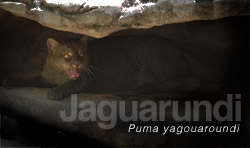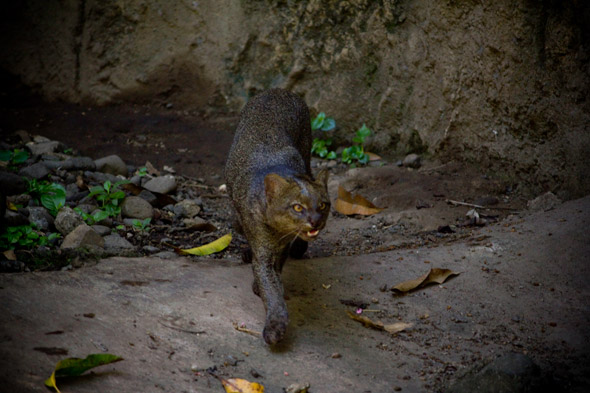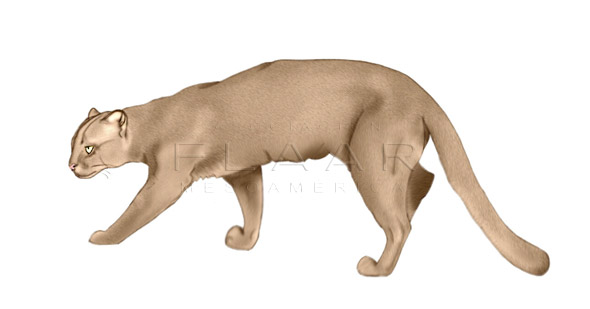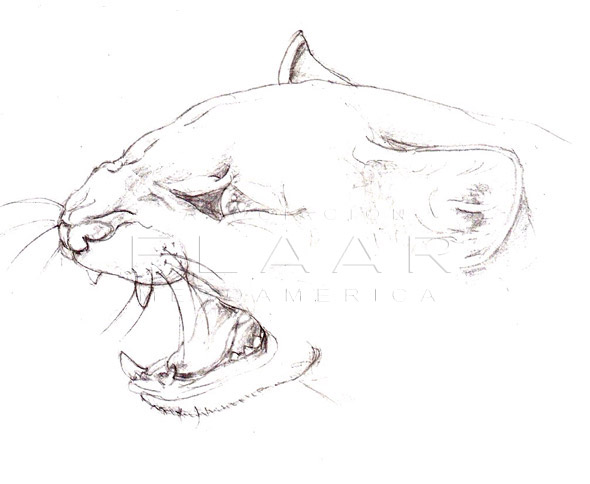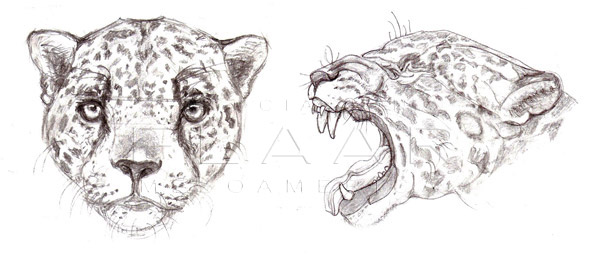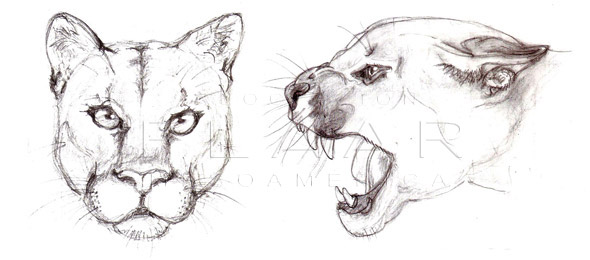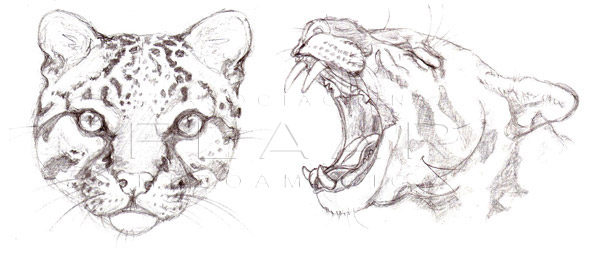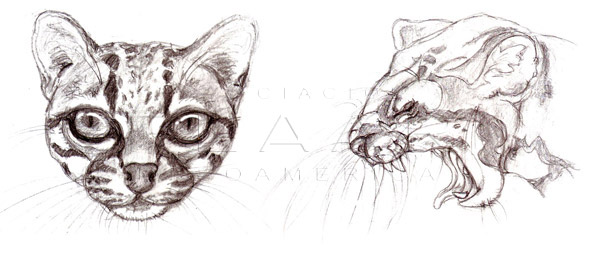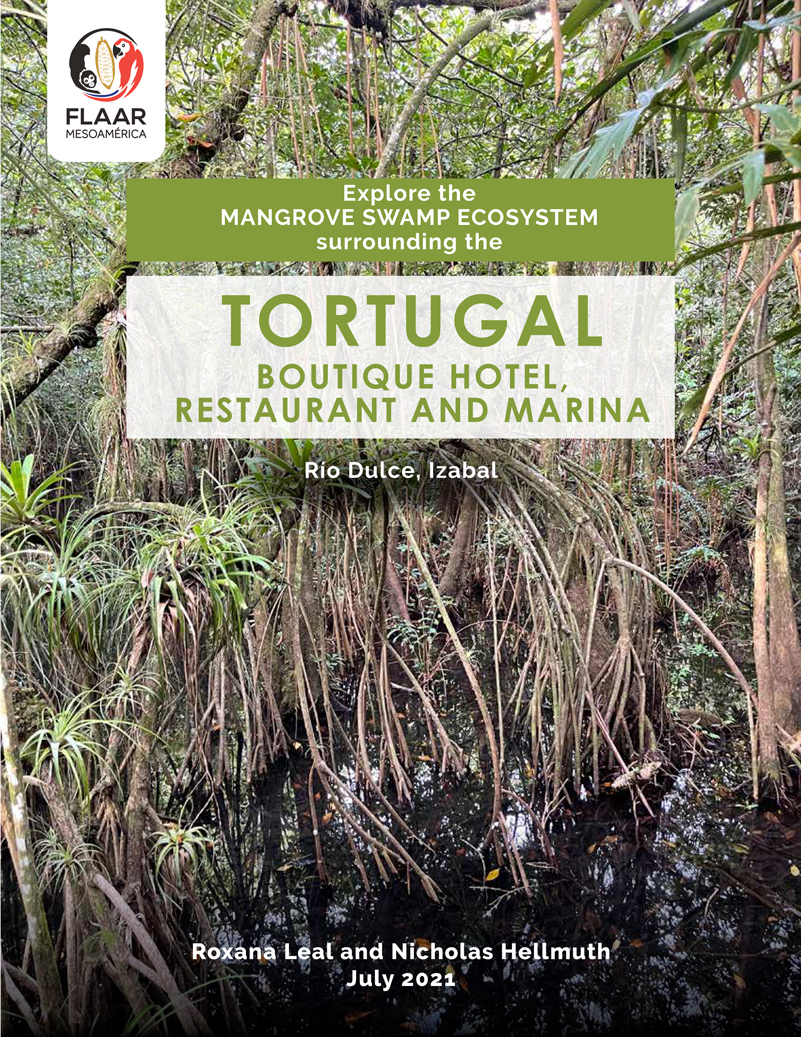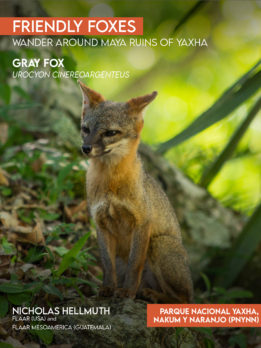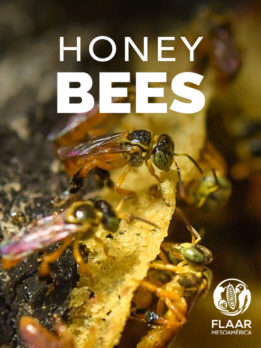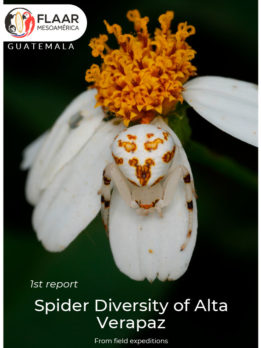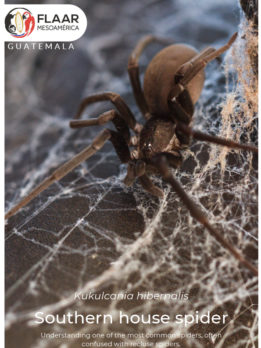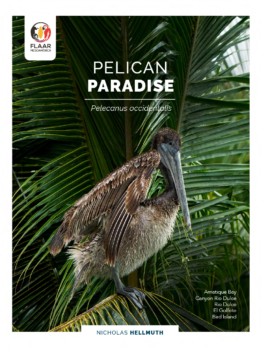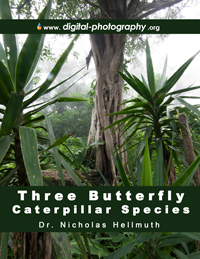Felines in pre-Columbian Maya art
Our long-range project is to study all significant animals associated with Maya culture. Since there are several hundred species involved, we are studying them by groups or themes. Felines are one major theme since the jaguar was of obvious significant interest to both the Maya, Teotihuacan, and Aztec cultures.
Of the five felines of Mesoamerica (cougar, margay, ocelot, jaguar, and jaguarundi) the Jaguarundi is least often pictured in Mesoamerican art or featured in Mesoamerican myths.
Its scientific name is Puma yagouaroundi (Geoffroy, 1803). Over the time the name has changed. Originally was named as Herpailurus yaguarondi, then changed to Felis yagouaroundi. Today the official name is Puma yagouaroundi (Clavijo y Ramirez 2009). This is one of the carnivores that play a decisive role in the conservation of the forest biodiversity to control predation on plants.
The jaguarundi is a medium-sized feline. Photography by Sofía Monzón, using a Canon EOS Rebel T2i. Autosafari Chapin, July 2012.
There are two felines in Mesoamerica with no spots
- Jaguarundi, Puma yagouaroundi, otter cat
- Puma, mountain lion, leon, Puma concolor
The puma is a match for the jaguar. The jaguarundi has a medium size head between a margay and ocelot (but a jaguarundi has a proportional long body).
Front view of the head of a Jaguarundi, illustration by Diana Sofía Zea. Copyright FLAAR 2012.
The head of a jaguarundi is very small compared with its stretched body proportions. His head is almost the size of a domestic cat head, but the body is much longer, starting with a long but thick and powerful neck.
Body fur color ranges considerably from golden passing fox color to dark gray to almost black. According to Fiona (2009) the body color could be dark gray, gray, chocolate brown, or sometimes even entirely reddish. However gray individuals are the most frequently reported. They don't have a significant spot pattern on most, but if you look at all the images on Google, you begin to notice definite spot patterns, especially on The Animal Files web site. Indeed that web-site indicates they are spotted as kittens.
This species presents a wide geographic distribution from south Texas (United States), from east to west in the lowlands in Mexico, and southward through the valleys in Peru, southern Brazil, and Paraguay and to the province of Buenos Aires and Rio Black (southern Argentina). It has not been reported at more than 3200 meters over sea level, but Julia (et al 2000) indicates that its range is up to 2000 m. (Clavijo and Ramirez 2009). Its habitat is very similar to the ocelot (Leopardus pardalis), but Jaguarundi is more tolerant to open areas like meadows and pastures (Clavijo and Ramirez 2009).
The jaguarundi is a medium-sized feline. Photography by Sofía Monzón, using a Canon EOS Rebel T2i. Autosafari Chapin, July 2012.
This species is very appreciated because of the preciousness of the skin, which is the main reason why it has been caught. Also it has been losing its natural habitat because of the human pressure. What has caused the isolation of some population, in some cases, even the extinction because of the bottle neck (Clavijo and Ramirez 2009).
Full-body illustration of a jaguarundi by Diana Sofía Zea. Copyright FLAAR 2012.
In southern Texas, the Lower Rio Grande Valley has been converted in the last 60 years in agricultural and urban development, leaving only 5% of the original vegetation in this area, which has caused the banishment of this kind in United States, despite the high tolerance to habitat modification. However in some countries is not that persecuted. In Argentina is only persecuted because it hunts only chickens. In countries like Belize, El Salvador, Bolivia, Colombia, Costa Rica, Panama, Mexico, Guatemala, Uruguay and United States, among others the hunting is illegal (Clavijo and Ramirez 2009).
Studies about food habits detected mainly a presence of herbivores and /or seed predators. It also has been detected that they feed on small or medium sized mammals, birds, snakes, lizards, fishes, invertebrates and even eat plants. According to where they live, they have a food preference adapted to that situation. Cabrera and Yeppes (1940) report that for the Central America population there is a preference for primates. Ximenes in 1982 detected that the marmoset (Callithrix jacchus Linnaeus 1758) is ingested by the northeast Brazil population (Tófoli et al 2009). Although it appears to have a long list of food items, these vary among the distribution and the ecosystem structure (Tófoli et al 2009).
Since information of jaguarondi (P. yagouaroundi) is limited, we recommend biologists and archeologists to study this beautiful creature as a theme for your thesis or dissertation.
Side view of the head of a Jaguarundi, showing the feline's teeth. Illustration by Diana Sofía Zea. Copyright FLAAR 2012.
What is an onza?
Every time I ask about a jaguarundi, someone mentions the mysterious onza. Without getting in to the biology of this question, my guess is that there was, or is, a variant of the cougar or jaguarundi. Not a unique species, but a variant. An example: the black jaguar is not a different species. There is a good bibliography about the onza in Wikipedia. But my experience with the onza is in Mexico, when I ask local people (since my experience is primarily from the field, not just from books or articles).
Comment on the position of the ears in a feline
As with many animals, the position of the ears varies depending on the mood of the animal. Felines, and other animals, place their ears in specific positions as a way of expressing (displaying) their feelings: fear, attack mode, etc.
Jaguar, Panthera onca . Front and side view of the head. Illustration by Diana Sofía Zea, Copyright FLAAR 2012.
Puma concolor. Front and side view of the head, showing the ears laid back. Illustration by Diana Sofía Zea, Copyright FLAAR 2012.
The ocelot, Leopardus pardalis, is a smaller feline. Front and side view of the head. Illustration by Diana Sofía Zea, Copyright FLAAR 2012.
Margay, Leopardus wiedii. Front and side view of the head. Illustration by Diana Sofía Zea, Copyright FLAAR 2012.
Mayan terms for jaguarundi
- Ekmuch in Yucateco Maya
- ek-barum, Maya Lacandon (frankly I would expect that in Chorti and ek-lalum in Chol, Cholti, or Yucatec).
- Kakicoohish in Kekchi.
Words in most Mayan languages are spelled several different ways. Even the name of the language is spelled differently about every 15 years! One group of scholars has one spelling system; another clique has another spelling agenda. So it helps to have experience with linguistics to understand how many ways one word can be written. An additional issue is that a word such as Kakicoohish is repeated in so many dozens of web sites there is no realistic way to give a citation to where this started.
Bibliography
Several entries are from the Texas Parks and Wildlife Department Wildlife Diversity Branch. Understandably they do not cite monographs on the felines of Guatemala. Nine entries are from Arkive, but it is ironic that their bibliography lacks all the major publications on felines of Guatemala, Mexico, Honduras, and El Salvador and have only one article on Belize.
- 1964
- A field guide to the mammals. Houghton Mifflin Company, Boston, Mass. 284 pages.
- 1995
- Onza! The Hunit for a legendary Cat. High Lonesome Books.
- 2000
- Cats of Texas. On-line.
- 1994
- The mammals of Texas. Texas Parks and Wildlife Press. Austin, Texas. 338pp.
- 1997
- Neotropical Rainforest Mammals: A Field Guide. Second Edition. University of Chicago Press, Chicago.
- 1998
- Herpailurus yagouaroundi. Mammalian Species, 578: 1 - 6.
- 2007
- Neotropical cats in southeast Arizona and surrounding areas: past and present status of jaguars, ocelots and jaguarundis. Mastozoología Neotropical, 14(2): 189 - 199.
- 1989
- Movement patterns and food habits of four sympatric carnivore species in Belize, Central America. In: Redford, K.H. and Eisenberg, J.F. (Eds) Advances in Neotropical Mammalogy. pp 243-264. Sandhill Crane Press, Gainesville, Florida.
- 2006
- The Encyclopedia of Mammals. Oxford University Press, Oxford.
- 2007
- El gato gris (Puma yagouaroundi) en el Parque Nacional Kaa-Iya del Gran Chaco, Santa Cruz, Bolivia. Mastozoología Neotropical, 14(2): 263 - 266.
- 1961
- The Onza. The Story of the Search for the Mysterious Cat of the Mexican Highlands. Exposition.
- 1991
- Walker's Mammals of the World. The Johns Hopkins University Press, Baltimore and London
- 1996
- Wild Cats: Status Survey and Conservation Action Plan. IUCN/SSC Cat Specialist Group, IUCN, Gland, Switzerland and Cambridge, UK. Available at: http://carnivoractionplans1.free.fr/wildcats.pdf
- 1998
- Icons of Power Feline Symbolism in the Americas. Routledge.
- 2002
- Wild Cats of the World. University of Chicago Press, Chicago.
- 1987
- "The neotropical felids: jaguar, ocelot, margay, and jaguarundi" in M. Novak, J. Baker, M.E. Obbard and B. Malloch (eds.) Wild Furbearer Management and Conservation in North America. Min- istry of Natural Resources, Ontario. 703-705.
- 1990
- Listed cats of Texas and Arizona recovery plan (with emphasis on the ocelot). Endangered Species Office, Albuquerque, N.M.
- 1975
- Mammals of the world. Vol. 2. John Hopkins Univ. Press, Baltimore. 1500pp.
- 2009
- Taxonomía, distribución y estado de conservación de los felinos suramericanos: Revisión Monográfica. Boletin Cientifico Centro de Museos. Museo de Historia Natural. 13(2): 43-60
- 2000
- Curso taller teórico práctico de capacitación de docentes auxiliares de la Reserva Experimental Horco Molle. Rehm: 98 p. (en) RICHARD, E. (ed.) Introducción a la biología, uso y estatus de los felinos de Argentina. Serie apuntes No. 2 Versión 1.0. Universidad Nacional de Tucumán, Facultad de Ciencias Naturales e Instituto Miguel Nillo.
- 2011
- Consumption of an adult Puma yagouaroundi (Felidae) by the snake Boa constrictor (Boidae) in Central Mexico. Revista Mexicana de Biodiversidad 82: 319-321.
- 2009
- Jaguarundi (Puma yagouaroundi) (Geoffroy, 1803) (Carnivora, Felidae) food habits in a mosaic of Atlantic Rainforest and eucalypt plantation of southeastern Brazil.
- 1940
- Mamíferos Sudamericanos (Vida, Costumbres y Description). Buenos Aires: Historia natural Ediar, Compañía Argentina de Editores. 370 p.
- 1982
- Notas sobre felidos neotropicales, VIII Observaciones sobre el contenido estomacal y el comportamiento alimentar de diversas espécies de felinos. Revista Nordestina de Biología, 5 (1): 89-91 p.
Suggested web sites for seeing images of jaguarundi
As with almost everything else on the Internet, most web sites simply copy what they can beg, borrow, or steal from elsewhere (especially photos). A few sites are content farms, which are basically spam sites. We do not list the content farms.
www.agarman.dial.pipex.com/jundi.htm
Two photos, short page, but informative nonetheless.
www.ardea.com
Commercial stock photo site but does have over a dozen good photos (used by arkive web site). No text.
www.arkive.org/jaguarundi/puma-yagouaroundi/image-G43946.html
27 photos. But info is also good, with lots of links (bibliographic style).
www.cathouse-fcc.org/births2006.html
Over 20 photographs of two baby jaguarundis from age 7 weeks up to about a year old.
www.nsrl.ttu.edu/tmot1/feliyago.html
The Mammals of Texas, online edition. Brief but informative for the dry eco-system of Texas; one photo.
www.tpwd.state.tx.us/publications/pwdpubs/media/pwd_bk_w7000_0013_jaguarundi.pdf
Two pages of description (but only of jaguarundi in Texas), bibliography of five items, one photo of one jaguarundi.
Here are also some links to other FLAAR pages related with felines:
Bibliography on Jaguar, Panthera onca
Bibliography on Jaguarundi, Herpailurus yagouaroundi
Bibliography on Margay, Leopardus wiedii
Bibliography on Ocelote, Leopardus pardalis
Bibliography on Puma, Puma concolor
The Jaguar, Panthera onca, one of the biggest and most important felines of America.
How to photography margay (in Guatemala)
Most recently updated July 30th.
Updated July 1st.
First posted June 2012.


